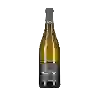
Winery Charte d'AssemblageVaucluse
This wine generally goes well with
Details and technical informations about Winery Charte d'Assemblage's Vaucluse.
Discover the grape variety: Saint Laurent
This grape variety was formerly cultivated in the southwest and in Alsace and the Toul region. It is also known in Germany, Austria, Luxembourg and Czechoslovakia. In France, it is no longer multiplied and is therefore in danger of disappearing.
Last vintages of this wine
The best vintages of Vaucluse from Winery Charte d'Assemblage are 2015, 2014
Informations about the Winery Charte d'Assemblage
The Winery Charte d'Assemblage is one of of the world's greatest estates. It offers 3 wines for sale in the of Vaucluse to come and discover on site or to buy online.
The wine region of Vaucluse
The wine region of Vaucluse is located in the region of Méditerranée of Vin de Pays of France. Wineries and vineyards like the Domaine Chêne Bleu or the Domaine Chêne Bleu produce mainly wines red, white and pink. The most planted grape varieties in the region of Vaucluse are Viognier, Merlot and Cabernet-Sauvignon, they are then used in wines in blends or as a single variety. On the nose of Vaucluse often reveals types of flavors of earthy, blueberry or dried herbs and sometimes also flavors of savory, anise or cinnamon.
The wine region of Méditerranée
Méditérranée is a PGI title that covers wines produced in a large area of the South-eastern coast of France, roughly corresponding to the wine region of Provence but also including Part of the Rhône Valley. The PGI shares its territory with multiple AOC appellations as varied as Châteauneuf-du-Pape, Bandol and Côtes de Provence. The PGI Méditérranée catchment area extends over 10 departments (including the two on the island of Corsica), as well as smaller parts of the Isère, Loire and Rhône departments. Viticulture is essential to the culture and economy of this part of France.
The word of the wine: Fulfilled
Said of a wine at its peak that is balanced and offers all its aromatic potential.











